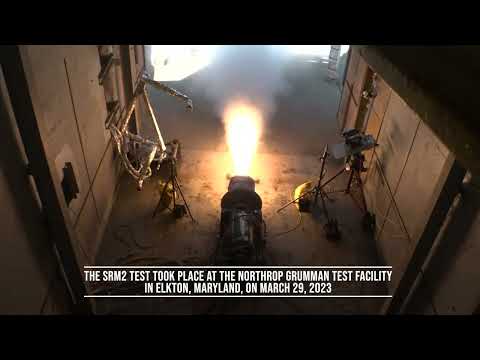The Mars Sample Return (MSR) has been going through a rough patch lately. We recently reported on reports coming out about Congress restricting its budget and potential cost overruns. However, like any good government program, progress continues toward the goal of bringing samples until there is a clear order to stop or the money drives up. That wasn’t the case back in March and April when NASA successfully tested two engines that will be used in the Mars Ascent Vehicle (MAV).
Designed to get the samples back off Mars and into Martian orbit, the MAV will be a two-stage system like many of its Earth-based predecessors. Known as SRM1 and SRM2 for the two different stages, each will take responsibility for a different phase of the MAV’s ascent flight.
SRM1 is the bigger of the two. Its goal is to get the samples off the ground and into the air, so it has to pack more of a punch than the SRM2. It also contains a novel feature called a supersonic splitline nozzle, or SSSL.
Testing of the SSSL and the rest of the SRM1 engine was performed at Edwards Air Force Base on April 7th. Part of a spectacular video NASA released provides details about the experiment, including that the SRM1 testing took place in a vacuum chamber, so there’s no sound to pick up on. Also, the corrective movements of the SSSL during the video seem particularly precise. The test was completed successfully, and the engineer is moving on to the next testing phase.
SRM2, on the other hand, is responsible for boosting the MAV into orbit, where it will rendezvous with the spacecraft that will take it back to Earth. Another challenge represented in its test video is that it will have to deal with spin.
On the test bench, which was not in a vacuum chamber and could be heard warming up, the rocket engine spun at 200 rotations per minute (RPM). Its performance appeared remarkably steady in the video, with little evidence that spinning like this is uncommon in rocket engines.
Both the SRM1 and SRM2 had another requirement for their test chambers – they had to be right around -20 degrees C. While the SRM2 test was performed outside at a Northrupp Grumman test facility in Maryland in March, it wasn’t cold enough in the exposed outside, so they had to cool the test chamber to the appropriate temperature.
Overall, both engines seemed to pass all the metrics required by their test plans, allowing them to move on to the next stage of development & testing. However, the project’s financial and administrative future remains up in the air, so it is unclear if either rocket will make it much further in development. But NASA is also particularly good at recycling technologies developed for other projects, so it can likely find a use for these functional rocket engines, whether they go on the MAV or not.
Learn More:
NASA Marshall Space Flight Center – NASA Mars Ascent Vehicle Continues Progress Towards Mars Sample Return
UT – The Mars Sample Return Mission is Starting to Look Expensive
UT – The Mars Sample Return Mission Will Take Two Helicopters to the Red Planet to Help Retrieve Samples
UT – Plans for a Mars Sample Return Mission Have Moved to the Next Stage
Lead Image:
Still shot of the video showing the testing of the SRM2 rocket.
Credit – NASA’s Marshall Spaceflight Center YouTube Channel

